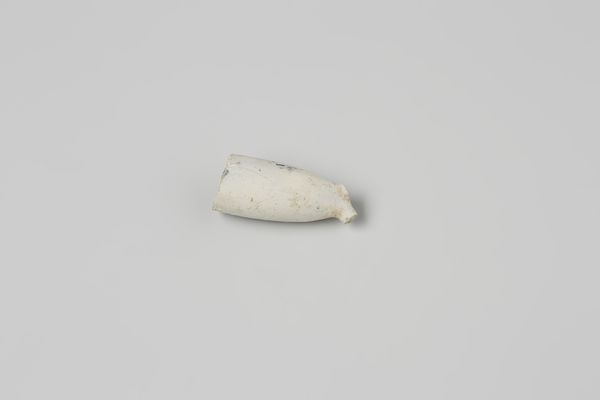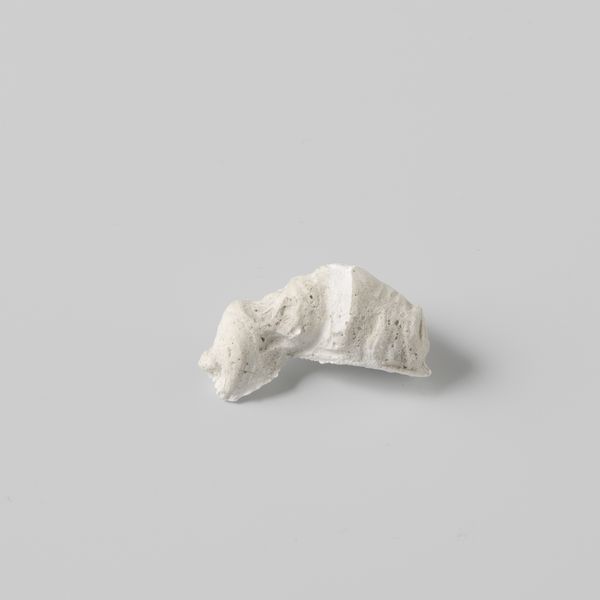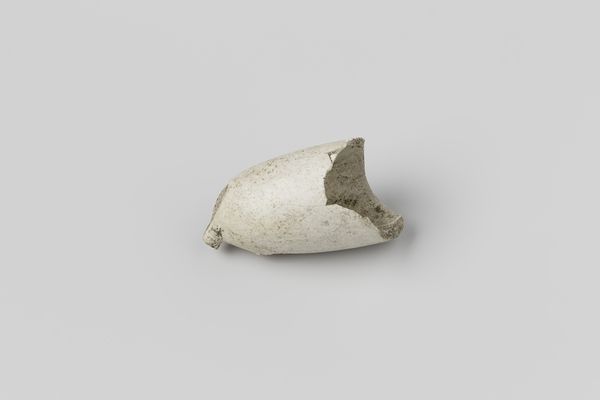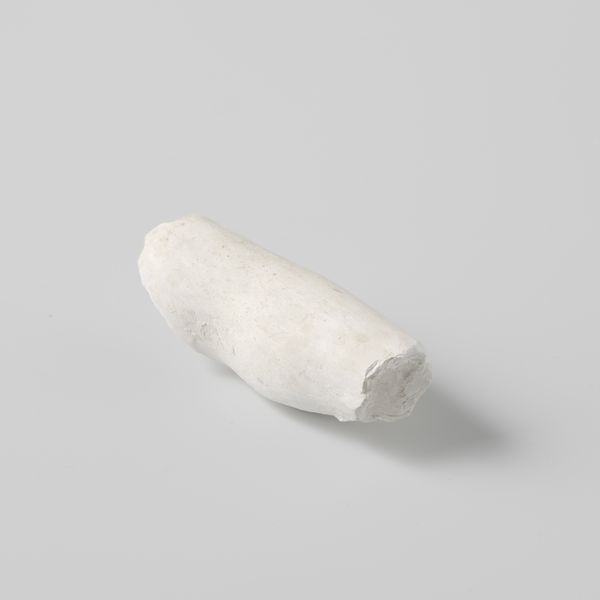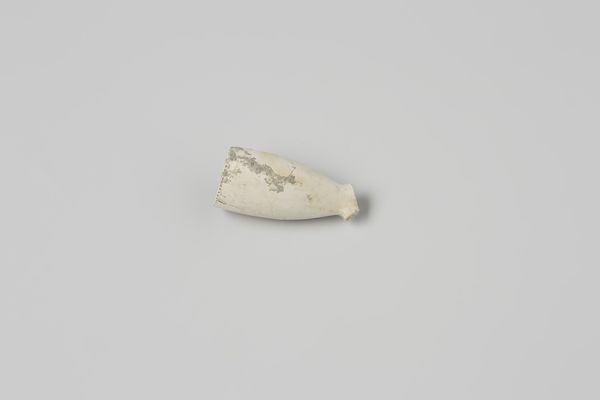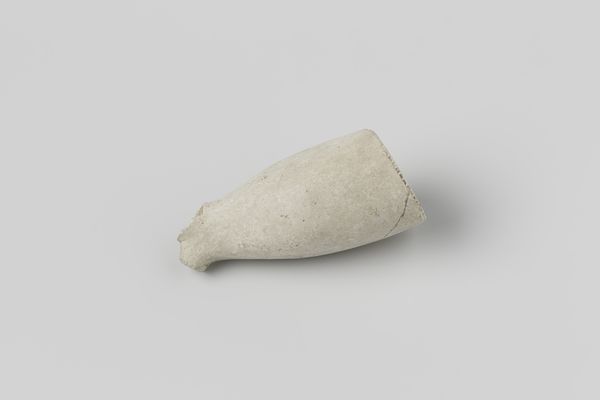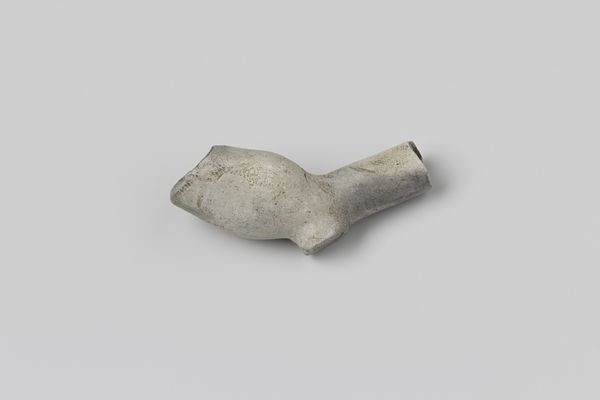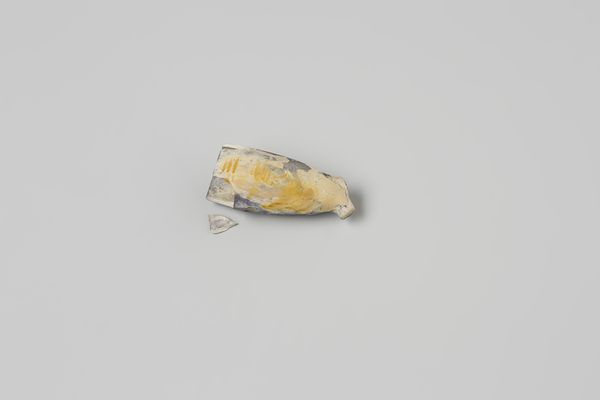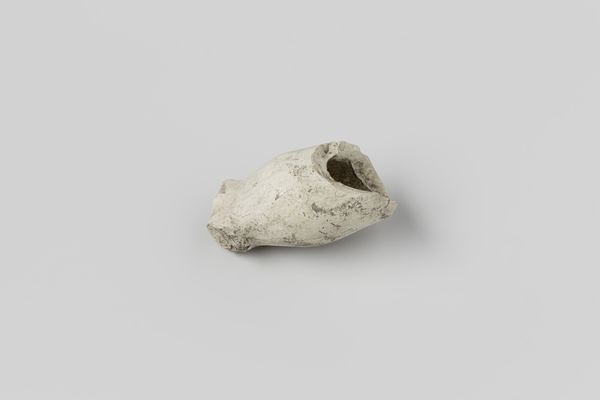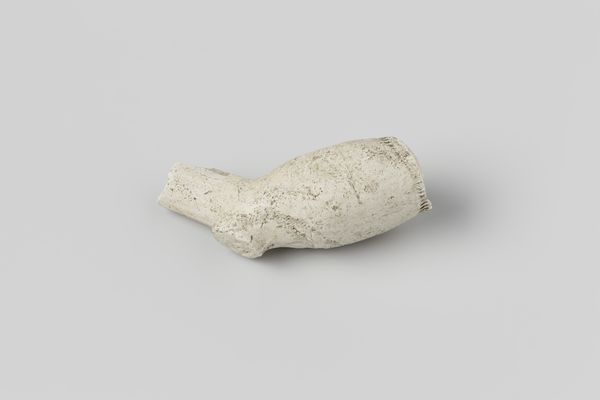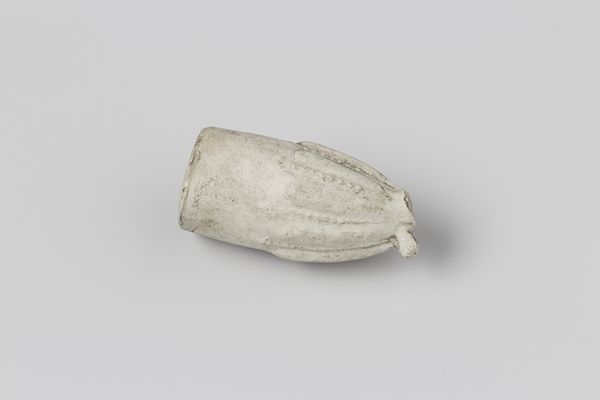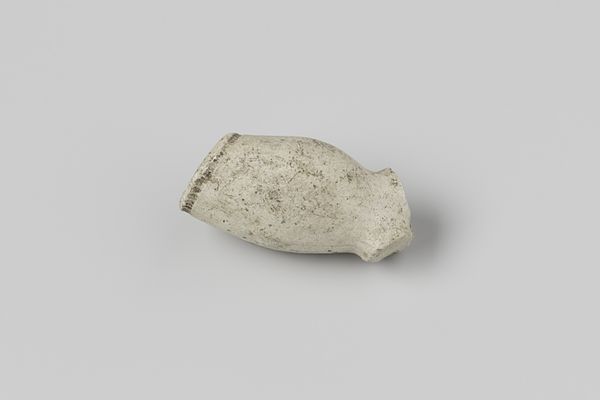
Fragment van een pijpenkop met stuk pijpensteel uit het wrak van de Oost-Indiëvaarder 't Vliegend Hart Possibly 1700 - 1735
0:00
0:00
ceramic
#
dutch-golden-age
#
ceramic
#
ceramic
Dimensions: length 4.6 cm, width 1.8 cm, depth 3.5 cm
Copyright: Rijks Museum: Open Domain
This is a fragment of a clay pipe, including part of the bowl and stem, recovered from the wreck of the Dutch East India ship ‘t Vliegend Hart. The Dutch East India Company dominated trade between Europe and Asia during the 17th and 18th centuries. Tobacco smoking became increasingly popular in Europe, leading to the production of clay pipes in several countries, including the Netherlands. These pipes often made their way onto ships like 't Vliegend Hart, which sank in 1735. The pipes were used for the consumption of tobacco by sailors and passengers during long voyages. The fragment evokes the social conditions of maritime trade. Researching the archives of the Dutch East India Company can tell us more about what role commodities like tobacco played in maritime culture. Through such understanding, we appreciate art as something contingent on social and institutional context.
Comments
No comments
Be the first to comment and join the conversation on the ultimate creative platform.
